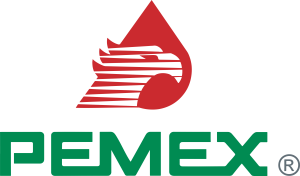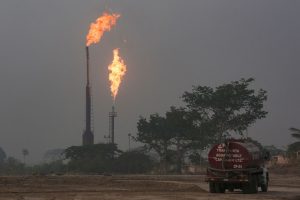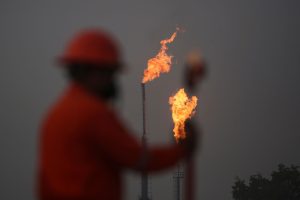Pemex Destroyed Resources, $342 Million Worth of Hydrocarbon Resources, Damaging Environment

Mexican state oil company Pemex illegally burnt off hydrocarbon resources worth more than $342 million in the three years up to August 2022 at two of its most important new fields, internal documents from the country’s oil regulator showed.
Mexican state oil company Pemex illegally burnt off hydrocarbon resources worth more than $342 million in the three years up to August 2022 at two of its most important new fields, internal documents from the country’s oil regulator showed. The three documents, produced by the regulator and dated August 2022, detail how Pemex destroyed resources worth $275 million from the Ixachi field in three years and $67 million from the Quesqui field in two years.
To calculate the value, the regulator used prices from non-public contracts to commercialize such hydrocarbons. Neither Pemex nor the energy ministry responded to requests for comment.
Pemex’s Actions and Their Environmental Impact
Late last year, Pemex said it would stop the flaring practice at Ixachi following Reuters reports on development plan violations at the two fields and related fines. Under pressure to meet ambitious production goals by Mexican President Andres Manuel Lopez Obrador, has repeatedly been fined by the oil regulator for violating its own pledges for the development of the Ixachi and Quesqui fields.
The plans, for the exploration and production of natural gas and other hydrocarbons in the southeastern states of Veracruz and Tabasco, were approved by the regulator, which is responsible for ensuring compliance. Burning off gas and condensate — a mixture of liquid hydrocarbons similar to a very light crude oil — has also resulted in extensive environmental damage.
Reuters reported last year that Pemex had been excessively flaring gas across the region, but the value of the destruction has not previously been reported.
Enjoying our insights?
Subscribe to our newsletter to keep up with the latest industry trends and developments.
Stay InformedThe Role of the Oil Regulator and Mexican Government

Gas is flared at the state energy company Petroleos Mexicanos (Pemex) Perdiz Plant, which is unable to process the vast volumes of gas sent from the Ixachi field, outside of Tierra Blanca, Mexico May 4, 2022. REUTERS/Quetzalli Nicte-Ha/File Photo
Mexico — the world’s eighth-biggest gas flarer — is under increasing pressure, including from the United States, to cut the practice and methane emissions. Managing emissions is set to become more challenging as fields age and the world’s most indebted oil company lacks sufficient funds to upgrade ailing infrastructure.
In Ixachi, the destruction was particularly dramatic because production started a year earlier. There, the documents show Pemex burnt off some 62.9 billion cubic feet of gas and 310,000 barrels of condensate. That is the equivalent of 31 percent of the total amount of gas produced from the field, and 1.3 percent of total condensate, according to Reuters calculations.
The documents were sent to the country’s energy minister, Rocio Nahle, the head of regulatory compliance at Pemex’s exploration and production arm, and senior officials at the regulator and the interior ministry.
Pressure to Reduce Flaring and Methane Emissions
Pemex produced 201.2 billion cubic feet of gas and 24.3 million barrels of condensate from Ixachi. But it still fell short of its targets. The documents also show that 77.6 percent of the investment into the field Pemex had pledged in its development
plan — totaling $2.9 billion — were not made. Lopez Obrador declared early on in his presidency that Ixachi and Quesqui formed part of 17 new priority fields expected to dramatically boost national production as part of a wider effort to make the country energy independent.
The Challenge of Managing Emissions and Infrastructure

A worker takes measurements in front of gas flares at the state energy company Petroleos Mexicanos (Pemex) Perdiz Plant, which is unable to process the vast volumes of gas sent from the Ixachi field, outside of Tierra Blanca, Mexico May 4, 2022. REUTERS/Quetzalli Nicte-Ha/File Photo
The fields were meant to receive more resources so Pemex can start exploration and production earlier and faster and make up for declining production from aging fields elsewhere. However, Pemex failed to complete the wells, pipelines, and other infrastructure needed to produce gas and condensate from the fields without high levels of waste.
In Ixachi, the destruction of value from burning off condensate was more than $21 million in three years; in Quesqui, it was almost $8 million in two years, the documents show. It has not previously been reported that condensate was also burnt off at the fields. Under Mexican law, documentation around such violations is not made public.
“The objective should be to maximize making use of all hydrocarbon products in the field,” one of the documents said, adding that “(Pemex) does not meet production it committed to because wells and infrastructure are not in place.”
Recommendations and Changes for Pemex
In the documents, the regulator also recommends changes so that Pemex “avoids the burning off and the destruction of commercial value of the hydrocarbon products.” Pemex has historically deemed investing in infrastructure to explore and produce gas too expensive and instead imported much of it from the United States.
In recent years, it has come under pressure because of the environmental damage associated with burning off gas. Late last year, Pemex acknowledged in its updated business plan for 2023 to 2027 that its poor environmental, social, and governance (ESG) record risked hurting its financing as rivals were transitioning faster to clean energies.
For further reading on the impact of the oil industry, visit Tank Transport’s Oil & Gas Industry News
Here are some external resources related to Pemex and the oil industry:
- Reuters article on Pemex’s flaring practice and its impact: Reuters
- Information about Mexico’s energy sector and Pemex from the U.S. Energy Information Administration: EIA
- World Bank’s Global Gas Flaring Reduction Partnership (GGFR) data on gas flaring: World Bank
- An overview of the environmental impacts of the oil and gas industry by the Environmental Defense Fund (EDF): EDF
- The International Energy Agency (IEA) report on reducing methane emissions in the oil and gas industry: IEA




















